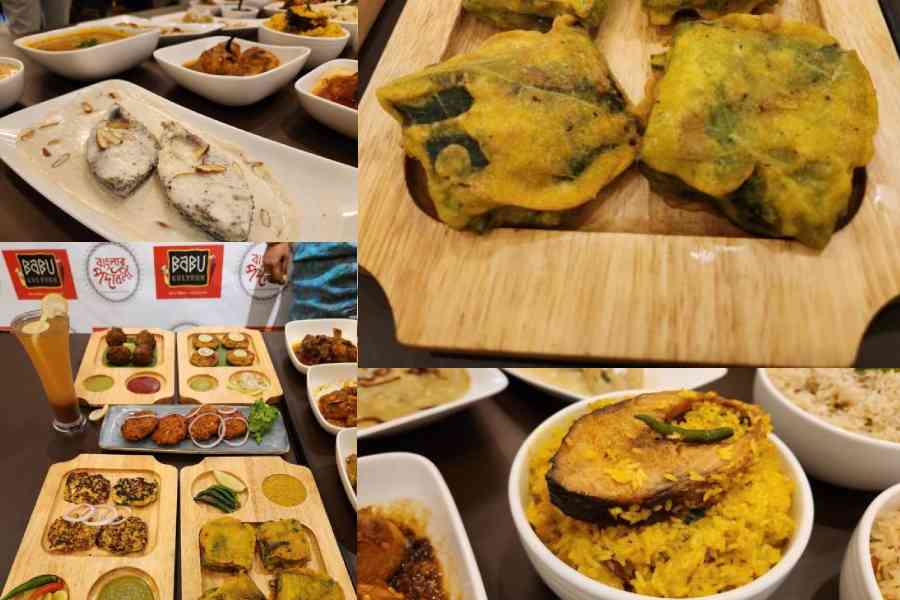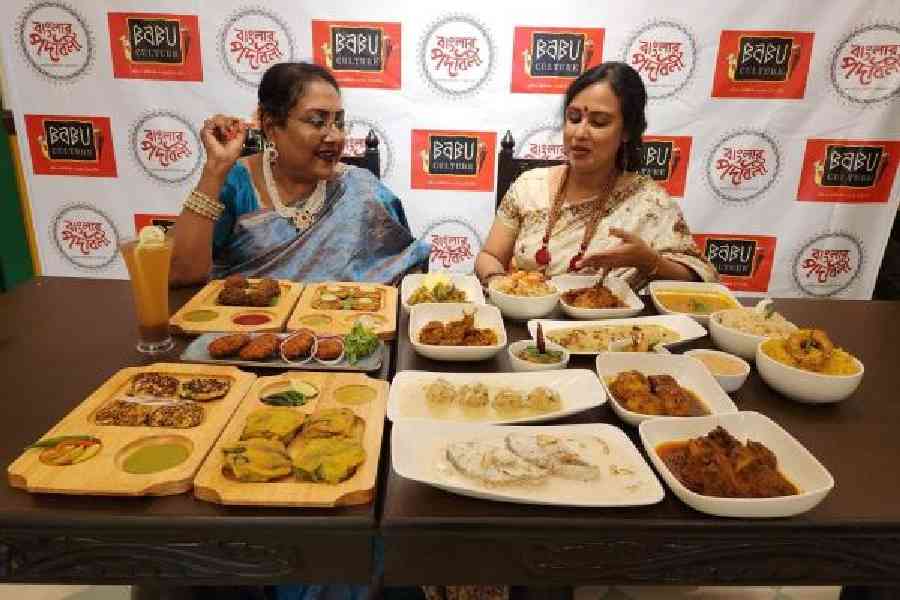Is opar Bangla food really spicier than epar? Is the Padma hilsa really better than the Ganga’s? Is hilsa better than prawn, for that matter? You can settle these eternal Bangal-Ghoti debates at Babu Culture this weekend, while sampling delicacies curated by a chef from Bangladesh, who grew up in India.
Nayana Afroz is a Gariahat Road-born chef who migrated across the border more than 30 years ago. She is married and lives there, but travels to promote Bangladeshi cuisine now. At this festival, at the CG Block restaurant, she has curated dishes not just from “Bangladesh” but from its various divisions. Divisions are somewhat like states in India.
Khulna borders Bengal on the west, and has the Sundabans in the south. No wonder almost every dish from there uses prawn and coconut. “My domestic help adds coconut milk in everything she makes, from mutton to kakrol,” says Afroz, who lives in Meherpur in Khulna.
Hence dishes of this region are milder and sweeter. Try Khulnar Lau Pata Pituli starter or Narkel Dudher Pati Pulao, that uses no water and all coconut milk and only ginger and star anise as spices. There’s also Chingri Pulao available.
Rangpur in the north-west has seen periods of food scarcity and from there comes an Aloor Dal, without dal. “Potato has always been cheap and easily available and so in the absence of lentils, they would mash potatoes, added spices and cooked it like dal. It’s a filling and versatile dish they can have relished with rice, panta bhat or ruti,” says Afroz.
Rajsahir Gota Masala Khasi is a must-have. “The bay leaf, cinnamon, cardamom, everything is added whole, lending a mild taste,” the chef says. Some combinations may rattle the mind — Jashore er Seddho Borboti Chingri Bharta or Khulnar Aam diye Dim Amoya — but taste smooth on the palate. “We also have a tamarind-jaggery-lime drink that’s called Tetul Pani locally. They have it during Ramzan and farmers have it otherwise too, to cool down in the heat,” she says.
Afroz admits some ingredients have been tough to source. “Faridpurer Kachki Bora wouldn’t have been possible had we not found kachki, a fish that’s rare for Calcutta. Chui jhal, a spice that lends a ginger-pepper-like taste and is a staple in Khulna to make meat and fish, wasn’t available at all and so I had to drop dishes with it. Mashkhali dal wasn’t available either so I substituted it with moong dal to make Ilish Khichuri, which Bangladeshis also do at times,” she says.

Khichuri there isn’t the quick fix like it is here. “It’s a rich dish and complicated to prepare,” she says, recommending Meherpur er Ilish Khichuri. And for the record, neither Ganga nor Padma, Afroz swears by hilsa from a little-known Barisal river.
Well, if not hilsa from Barisal, you can at least have the hilsa recipe here in Salt Lake. Barisali Ilish Malai is an heirloom recipe of a zamindari house in the southern division and is cooked in the cream of milk. “Barisal food is spicy but they also use coconut so the taste is mixed.”
“The spiciest regions like Sylhet and Chittagong have not been tapped at this festival but then this is only our first installment,” says Mridula Mazumdar, who runs Babu Culture. “We want to explore more regions, on both sides of the border hereafter.”
The festival is till July 14 but if the response is good, will be extended till July 21. “Thereafter we might retain the most popular dishes in our regular menu.”
